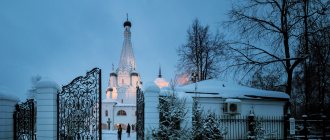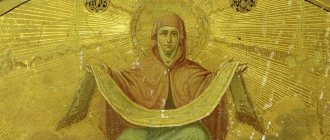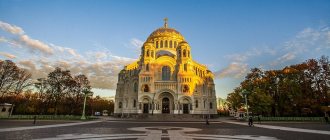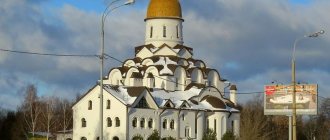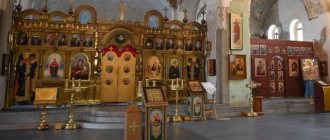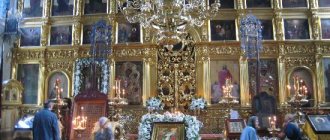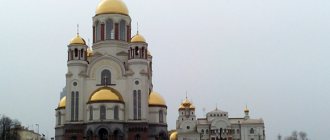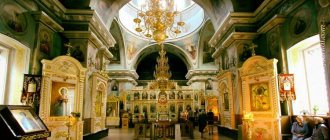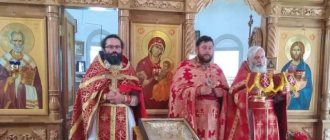The significance of the temple in culture and history
Russian neo-Gothic (or psedogothic) is a separate architectural phenomenon. It differs from the European vision of neo-Gothic and Gothic in general; Russian architects do not adopt this style entirely. For example, the Gothic frame system is almost always absent, but there are individual elements, such as broken pointed arches, or additional Gothic decoration.
Russian Neo-Gothic is the famous Gothic in a new way, a bold mixture of several styles, in particular, giving Gothic features of Byzantine architecture.
With the evolution of the style, pseudo-Gothic also changes, loses its characteristic Russian features, remaining within the limits of “internationality”: generally accepted and well-known Gothic forms and architectural solutions. In the second half of the 19th century. Mostly Catholic churches were built in the pseudo-Gothic style.
Throughout Russia and modern Ukraine, such churches are architectural monuments, being prominent representatives of their architectural direction. Catholic churches are also cultural monuments that arise for the needs of Catholic communities.
The conflict with Poland and the constant exacerbation of national issues put pressure on the Catholic Church, and it gradually became monopolized and conserved, creating a separate layer of society. Regular conflicts and Russian retaliatory measures aggravated this situation.
Several dioceses were disbanded, academies were closed, to which the Pope condemned such decisions, and the Russian Empire broke off diplomatic relations. It was not possible to resume everything at the previous level immediately. The importance of the church is also indicated by how much of their resources people gave to ensure that the church existed.
Local residents themselves demanded that the church be built, they themselves invested in the construction and purchased everything they needed at the expense of the community.
The Church of the Immaculate Conception of the Blessed Virgin Mary (Smolensk), which was built from 1884 to 1896, is currently in disrepair.
The Church of the Immaculate Conception of the Blessed Virgin Mary (Smolensk is famous for the fact that it has preserved churches of the pre-Mongol period) serves as a cultural monument for Russia . The building, which dates back to the 19th century, allows you to appreciate traditions, immerse yourself in history, and see with your own eyes the skill of the architects and the investments of people for whom this place was almost more important than their own homes.
One of the symbols of Smolensk is located next to a historically important cemetery.
Various books were kept in the temple, a census was conducted, and the dates of weddings and baptisms were recorded. Many people seeking to know the history of their own family turned to the church for such data and reconstructed their family histories with the help of church records.
From the history of the Catholic Church in Smolensk
The city of Smolensk (the first mention of it dates back to 863) arose at the crossroads of the most important trade routes - “from the Varangians to the Greeks” (from north to south, along the Dnieper to Greece and Byzantium) and the land route - from west to east.
From the 12th century The Smolensk region is showing interest in its western neighbors to develop trade and economy. For a number of reasons, the southern direction is losing its original meaning for Smolensk residents - they, like the Novgorodians, enter into free communication with European peoples, perceiving all the best traditions and elements of Western culture. Thus, the establishment of the closest trade and economic ties with the West contributed to the penetration of Western culture into the Smolensk land.
The first German trading enterprises along the Western Dvina were described by the Livonian priest and missionary Heinrich Latvian. In the spring of 1159, Bremen merchants were heading to the island of Gotland for trade purposes, but their ship was washed ashore by a storm at the mouth of the Western Dvina, where they were forced to settle. Trade relations between the “Latins” and the local population began and, after 6-7 years, they reached Polotsk and Smolensk with their goods.
Location and how to get there
The Church of the Immaculate Conception of the Blessed Virgin Mary (Smolensk is divided into 3 intra-city districts) is located on the street. Uritsky, 10 is the Industrial District. You can get there by public transport. Bus 127 goes from the bus station in the right direction, the fare is 60 rubles.
From the desired stop, the church building is perfectly visible, and it won’t be difficult to find your way around.
You can get there by trolleybus route. A trolleybus from the bus station runs every 15 minutes, this is trolleybus route 3 to the Roslavl ring, stop – st. Tvardovsky. The fare is 16 rubles.
You can also use minibuses: the necessary buses 40Н and 13Н travel at intervals of 15 minutes. Approximate cost – 20 rubles, stops – House of Specialists or st. Tvardovsky, respectively.
If you wish, you can walk around Smolensk. The journey from the bus station to the temple will take approximately 1 hour, but along the way you can go to the military history museum, pay attention to the monument to Prince Vladimir, or visit the equally famous Assumption Cathedral.
Shepherds
It is impossible to list all the shepherds who cared for the faithful over all the years of the parish’s existence, but some should still be mentioned, in particular, Fr. Stefan Denisevich (under him the construction of the temple was carried out), who later was the suffragan bishop of the Mogilev diocese and was appointed Administrator three times. Then, for 19 years, Fr. Peter Avglo (in the 30s he was the last Vicar General of Bishop Sloskans). The rectors were also teachers of the St. Petersburg Theological Academy oo. Chrysagon of Przemotsky and Anthony Okolo-Kulak (later - rector of the parish of St. Boniface in St. Petersburg).
Historical data
The advantageous location of Smolensk served as a prerequisite for its establishment as a cultural and religious center. The Catholic monastic order of the Jesuits settled here early, at the beginning of the 17th century. They were settled here by the Polish king Sigismund III after the conquest of Smolensk.
A parish house and a small church were built here for the Jesuits; the king himself allocated funds for their maintenance. Gradually they established a college here, developed a parish, interacted with the people living here, without dividing them into Orthodox and Catholics.
The Jesuits provided support to the local population in many ways: they taught local residents to read and write, and provided support to the poor and sick. During the famine in 1614-1616. It was the Jesuits who helped the starving residents by setting up temporary shelters for the poor in their home.
In 1636, a Catholic diocese was formed in Smolensk, and at the same time it was decided to build a stone church. In 1654, the war between Poland and Russia led to unexpected consequences: Smolensk was returned back to the control of Moscow and residents were promised to keep all their lands and property if they converted to the Orthodox faith.
And so it happened: after the annexation of Smolensk to Russia, all Uniate and Catholic churches were transferred to the Orthodox, but Catholic communities did not disappear anywhere. They continued to worship in home churches, they were allowed to invite Catholic priests from Poland and, if necessary, visit Catholic churches abroad.
This continued until the situation changed and it became possible to build their own church building. In 1735, by a new decree of the Russian Empire, all Christian denominations were allowed to freely perform divine services and build churches, with the caveat that the involvement of Orthodox Christians was prohibited.
The first building on the site of the cathedral
The exact date of construction of the first temple is unknown, but it is the period between 1735-1789. At this time, the rulers of the Russian Empire, Catherine II and Paul I, viewed Catholicism in general favorably. Catherine II supported the monastic orders and allowed them to set up boarding houses and private schools, and Paul I was even protector of the Order of Malta when he granted them asylum.
At this time, the Franciscan Order developed extensive activity on the territory of Smolensk.
Here was one of their monasteries, built back in 1626, but after the annexation of Smolensk they temporarily left the city and then returned. They organized a parish, and under their leadership the construction of the Church of Our Lady of the Angels began.
During the War of 1812, this temple was destroyed, but was soon rebuilt in the same place and with the same name, the very next year. This temple was a wooden church, designed as a temporary structure, but until 1838 this building was operational.
Soon the parish grew quite large and could no longer accommodate everyone, and then, through the efforts of the parish, a project was created for the now stone Church of the Nativity of the Blessed Virgin Mary. The church was erected in record time. It was located on a mound, which was a large grave remaining after the Patriotic War.
The capture of Smolensk by Napoleon led to great casualties among the French, and it was decided to bury them in one common grave.
The hill heaped on top became the foundation for the temple. Such a quick construction time and the rich decoration of the temple from the inside were explained by the love of the parishioners and their offerings. Many icons and temple decorations, things for worship and vestments were brought to the temple as gifts by local residents.
There was a cemetery and a garden near the temple grounds; they were always in proper order and were always properly cared for. According to surviving letters from travelers of that time, the building and surrounding area were described in the most flattering terms.
New church building
Soon the church could no longer accommodate all the willing parishioners. According to the census, in Smolensk itself there were about 1 thousand people who regularly visited the temple, and with the arrival of the army the number almost doubled.
The history of the appearance of Catholic religious buildings in Smolensk:
The rector of the temple submitted a petition to rebuild the temple and received permission. Soon a divine service took place, at which the territory for the new building was consecrated. The new church partly occupied the territory of the already standing temple.
The temple began to be built quite quickly. There was no protest for the Catholic Church in Smolensk, so already in 1894 the project of M. F. Meischner, a famous architect, for the construction of a new Church of the Immaculate Conception of the Blessed Virgin Mary was approved.
Within a few months the foundation of the temple was laid.
Meischner did not live to see the construction of the cathedral. The contract for the construction of the stone temple was won by the famous Belarusian architect L. I. Dubeikovsky. He took charge of the construction team and in 1894 the main construction was completed, and interior finishing work continued until 1898.
The church building was consecrated on June 29, 1898, on the day of the celebration of the apostles Peter and Paul. Now the temple could accommodate up to 3,500 parishioners. The total number of parishioners in the parish was more than 9,000 people. The renewed temple was assigned lands and a large number of buildings.
Soviet period
The Church of the Immaculate Conception of the Blessed Virgin Mary (Smolensk is one of the oldest cities in Russia) almost miraculously survived the revolution of 1917 and was on the verge of destruction and looting. By decision of the authorities, the registry books were taken away from the church , and the situation with the church was aggravated by the conflict between Poland and Russia.
In 1921, donations from parishioners, jewelry and objects made of precious metals, frames, and precious fabrics began to be confiscated from the church, and a detailed inventory of all church property was carried out. Based on the results of the inventory, the buildings were taken away: the rector’s house was disbanded, the shelter was taken away, part of the temple was designated as a workshop, and part was designed as living quarters.
The temple was designated as part of the museum and, yet, in spite of everything, services were held in it until 1936, until the arrest of the rector of the temple, Fr. I. Zholnerovich. After his arrest, religious services were prohibited with the caveat “for technical reasons,” and other priests were denied registration.
All this time the church council continued to work, but this did not save the community: in 1939 it no longer existed.
The church was officially closed on January 14, 1940 , and now the premises of the former church served as the NKVD archive, and almost 15 years later, from 1956 until 2012, the State Archive of the Smolensk Region was located here. The temple was finally converted into a secular building.
Gradually, all the distinctive signs were removed and removed, the altars and iconostasis were dismantled, and metal was removed from the roof. In the 1950s, the internal organ was dismantled, many details of the interior decoration and church attributes were also removed, and they could no longer be found. At the same time, the crosses on the domes were removed.
First Catholic Church
The first Catholic church in Smolensk - the church in the name of the Holy Virgin Mary - was built in the second half of the 12th century by German merchants in a place where trade was carried out (in the bay of the Churilovka River), and which was quickly populated by townspeople and newcomers.
The further fate of this Catholic church can be traced until the end of the 16th century. There is mention of it in written sources. For example, in the agreement of Smolensk with Riga and the Gothic coast, concluded in 1229, the “Latin church” in Smolensk is named (in another version of the agreement - “German shrine” - that’s what the locals called the temple).
The church cared for the visiting trading population living in Smolensk - a German settlement was directly adjacent to the place of trade. Smolensk residents born from mixed marriages were also baptized in this church.
Local history literature concerning partnerships between Smolensk residents and their Baltic neighbors testifies to equal relations between the two Christian denominations - Orthodox and Catholic. Both Orthodox and Catholic clergy strictly monitored the “correctness” of trade, compliance with the international system of weights and measures...
However, starting from the 14th century. Peaceful trade relations between Smolensk and German Catholics began to deteriorate. Not the least reason for this was the aggressive policy of the Teutonic Order towards the Slavic peoples. It is a well-known fact that the participation of the Smolensk regiments in the Battle of Grunwald in 1410. played a decisive role in the overall outcome of the battle. The German Catholic population of the city left the German settlement in the 15th century, and those who remained were assimilated through mixed marriages and gradually converted to Orthodoxy.
Period from 1514 to 1611 marked by the fact that, due to its geographical location, Smolensk again becomes a participant in interstate and interfaith relations. During this period, quite frequent contacts of Russian sovereigns with Rome were noted. At the same time, Roman ambassadors often passed through Smolensk.
Current state
The Church of the Immaculate Conception of the Blessed Virgin Mary (Smolensk has more than 20 religious buildings on its territory) is currently state property, and, despite many years of correspondence between the parish and the authorities, there are no plans to transfer it to Catholics in the near future.
Petitions are periodically created demanding the return of the church or at least its restoration, but there are no answers to this either. At the moment, the only restoration work is fencing the church area with netting to prevent falling bricks.
Stained glass windows were destroyed, window openings were blocked with bricks everywhere.
The walls are settling, bricks are spilling out and being squeezed out along each side, and several walls of the cathedral are crossed by through cracks. Many spiers are broken or bent, the joints of metal sheets are coming apart, the gutters on the outside are also broken off, and parts of the eaves or siding periodically fall off.
Trees grow on the roof, and the roof itself leaks. The temple is closed to visitors and very few people manage to get inside. The emergency condition does not allow tourists to enter there; you can admire the former grandeur of the church only from a distance.
Perhaps the cathedral will be repurposed as a philharmonic building; negotiations on this have been ongoing since 2021 with local authorities.
Time of Persecution
In December 1917, the Smolensk deanery was founded, which included all the parishes of the Smolensk province. Father Anthony Okolo-Kulak became the dean.
In 1918, metric books were confiscated from all religious institutions, including Catholic churches. The position of the Catholic Church was aggravated by the conflict between Soviet Russia and Poland. In the summer of 1921, with the onset of famine, the confiscation of church valuables began. All gold and silver items – donations from parishioners – were confiscated from the temple. The parish buildings were taken away even earlier - the orphanage buildings were taken away, the rector and vicar were evicted from the house, and a brush-making workshop was opened in their house. Part of the building was given over to Smolensk residents to live in. In 1926, the temple was taken under the protection of the provincial museum.
At first, the authorities did not create any obstacles for Catholics. But in 1936, the rector, Father I. Zholnerovich, was arrested. Church services stopped. Since 1937, religious services were prohibited “for technical reasons,” and priests were denied registration. All these years the church council continued to operate, and many parishioners paid with their lives for their courage. In 1937-38, 292 Poles and 40 Lithuanians were shot in Smolensk, including many Catholics and church activists.
By the end of 1939 there was no Catholic community. On January 14, 1940, by decision of the Smolensk Regional Council, the temple was closed, and the building was transferred to the NKVD archives.
Description of the interior decoration
At the time of completion, the church was the greatest project in the city. He made an indelible impression on the parishioners who visited inside. The interior decoration was mainly made of wood: the temple had 5 oak altars, skillfully carved.
The pulpit and carved benches were also made of wood. Sinyavsky, a Smolensk woodcarver, worked on all the wooden elements. Kirillov’s Smolensk workshop worked on the pulpit. The special pride of the church were its stained glass windows. They were created in Warsaw and brought here by the workshop of Countess Lubienska.
The stained glass windows depicted icons of Jesus Christ and the Mother of God, as well as revered universal Catholic saints: St. Francis, St. Anna. Other stained glass windows depicted locally revered figures: the Lithuanian Saint Casimir and the Polish Saint Stanislaw Kostka.
The remaining windows were filled with colored stained glass, creating multi-colored light inside the church when the sun's rays were refracted.
The temple was painted by guest artist Anthony Tonchinsky. In 1989, the interior walls were decorated with relatively modest ornaments, and in the altar part of the temple Jesus is depicted, and on two sides are Moses and the Apostle Peter. Jesus hands the first the tablets, and the second the keys to the gates of heaven.
Monastic orders
On July 7, 1611 (after the conquest of Smolensk by Sigismund III), the Jesuit Order settled on Voznesenskaya Mountain in the Smolensk fortress. A small house was built for them, and the church was given ownership, which, through the efforts of the Jesuit fathers, was subsequently transformed into a much larger church, more comfortable and beautiful. The maintenance was assigned by the king, support came from soldiers of the Polish army and from believers.
Since during the long siege of the fortress more than 70 thousand of its defenders perished from hunger and disease, in the captured city the bulk of the population was not the local population, but soldiers of the army of Sigismund III, and therefore, in order to strengthen the fortress city, he was forced to populate the city with faithful people, for which the population of Poland was attracted through various benefits and privileges.
From 1614 to 1616 famine is raging in Smolensk and the Jesuit fathers are helping the starving residents of the Smolensk fortress in various ways. Many of the poorest residents of the city escaped hunger and cold in the houses of the Jesuits. The priests of the order founded the Royal Jesuit College. The doors of this school were opened in 1623, although they had previously taught elements of Latin grammar in their residence. Subsequently, the college expanded significantly due to real estate donated by noble persons.
The college contained up to thirty students and had more than four classes. Up to twelve priests taught there, and courses were given in philosophy, mathematics, grammar, moral theology, and rhetoric. Over the years of its existence (until 1654), it was governed by eleven rectors and vice-rectors. According to documents, local residents were very willing to send their sons to study at the college.
The stay of the Jesuit fathers on Smolensk soil had an undoubted influence on the general educational and cultural level of the Smolensk people of that time.
In addition to the Jesuits, a little later the Dominicans settled in the city - on Kozlovskaya Mountain, not far from the Avraamievsky Monastery and the Bernardines - who built a temple on the site where the Trinity Monastery was later built.
It is known that the first Franciscan monastery in Smolensk was created in 1626 as a reward to Franciscan chaplains for the good performance of pastoral duties among the soldiers of the Polish army. The monastery and temple were built within the fortress wall, and the Franciscans also received land outside it. More than 20 monks lived in the monastery.
Activities of the parish
The church building is closed for repairs, but the church community has never ceased to exist.
Since 1991, since the registration of the new community, the parish has continuously developed. Initially, services were held in the houses and apartments of parishioners; over time, the cemetery tomb, the Komorowski crypt, was transferred to the parish, and a church was located there for a long time.
Several nuns lived in the same building and there was a room for the abbot. There was no permanent priest here; services were performed by visiting priests from Mogilev, and only in 1992 did the community receive a parish rector, Fr. Jacek Kuchmik, who still heads the parish.
A few years later, the community was given another premises - the building of the old parish house.
The gradual development of the community allows the small parish to again and again request the authorities to return the cathedral to the control of the Roman Catholic Church. Now the parish numbers about 500 people from Smolensk and neighboring settlements.
In 1999, the chapel was consecrated. It can accommodate 150-200 worshipers, it has a small electronic organ, the church is improving every day, and the community never stops hoping for a quick return of the building.
Daily services are held in the temple, located on the territory of the old church. In addition to the celebration of the Mass, the community regularly hosts meetings between the priest and young people and separate meetings for everyone to talk with the priest, learn the basics and prepare for baptism.
The parish regularly updates its website: it posts the current schedule of services, notes meetings and invited guests. The parish house building houses the library, parish books, office and meeting rooms.
In 2021, the NKVD archive was completely removed from the collapsing church building.
Church of Our Lady of the Angels
The Catholic Church reappeared in Smolensk sometime between 1735 and 1748. This was due to the resumption of the activities of the Franciscan monks. In the second half of the 18th century, they provided pastoral care in a Catholic parish and served in a small church, which was located on the very spot where the current Catholic church stands. During the hostilities of 1812, it was destroyed and to replace the one that burned down in 1813, the provincial architect is designing a new temple. It existed until 1838, when, with the permission of the government and Metropolitan Pavlovsk, construction of a stone church in the name of the Nativity of the Blessed Virgin Mary began using voluntary donations from parishioners.
Help those in need
On the territory of the church in 1898, just 2 years after the completion of construction, the Society for Benefiting the Poor was located. Initially, his main support was directed towards the Jews, but almost immediately the society took everyone under its wing.
It provided a wide range of material support to the population: it provided food, medical care, shelter, clothing, helped in finding work, and provided assistance to those wishing to return to their homeland. In addition, it distributed books and took care of the spiritual care of Catholics throughout the vast territory of the Smolensk province.
At the same time, several workshops soon opened here, where the poor were employed.
In 1900, a school for girls was opened here, and a little later, in 1902, a Jewish library. In addition, shelters for orphans and almshouses for women and men were established on the territory of the church. Social activities and work in almshouses and orphanages were carried out by novices and nuns from the Order of the Most Pure Heart of the Blessed Virgin Mary.
The Komorowski family of Polish nobles made a large monetary contribution and were regular and main sponsors for the temple.
Church of the Nativity of the Blessed Virgin Mary
The church was built in a year. The hill on which it is built is a large tomb. In 1812, when Napoleon's army captured Smolensk, thousands of French died here under the walls of the Kremlin. Their bodies were placed in one large grave, which later became the base of the hill on which the temple stands to this day.
The Church of the Nativity of the Blessed Virgin Mary was built in the style of Russian classicism. Its exact description has been preserved. According to the Polish Illustrated Weekly, which published a photograph of the church and a detailed description of it in 1870: “The church is rich in decorations, each item is a gift from the parishioners. At the same time, there is a sense of concern for order and symmetry - everything makes a good impression. Currently, the church is maintained thanks to Abbot Denisevich... The garden and cemetery are maintained through the efforts of Father Moshalsky, and this is one of the most beautiful places in Smolensk... We have seen many churches and cemeteries in our lives, but nowhere have we seen such order as in Smolensk.”
Divine services
Services are held regularly in the temple.
| Event | Time spending |
| Prayer of St. Rosary | Every day, starts at 17:30 |
| Mass in Russian | Monday, Wednesday – Saturday: starts at 18:00 |
| On Sunday Mass is celebrated at 9:00, 11:00, 18:00 | |
| Mass in Polish | Tuesday: starts at 18:00 |
| Weekly prayer services at the end of Mass | Tuesday: prayer service to St. Anthony of Padua |
| Thursday: prayer service to St. Francis of Assisi | |
| Additional prayer services | May: prayer service to the Blessed Virgin Mary |
| June: prayer service to the Sacred Heart of Jesus | |
| October: prayer service to the Blessed Virgin Mary |
In addition, the parish provides the opportunity to hold separate services for Catholic pilgrimage groups with their own priest or with a priest from the parish. A private tour of the temple and cemetery grounds can be arranged.
Additionally, an excursion to the Katyn memorial complex and a service there are offered. All this is possible by prior arrangement.
The city of Smolensk has a rich history, experiencing many changes in its lifetime. The government in it changed and the religion constantly changed, leaning first to one or another Christian denomination. Wars raged there, and its location on trade routes regularly brought new trends.
The Temple of the Immaculate Conception of the Blessed Virgin Mary is, to some extent, a symbol of everything we have experienced: history etched in stone.
Author: Volkova Katya
Article design: E. Chaikina
Formation of the Catholic diocese
On September 1, 1636, the Papal document on the creation of a department in Smolensk was issued - a quarter of a century was required for organizational issues related to the formation of the Catholic diocese of Smolensk. Such a long period was explained by many things: the difficult situation of Sigismund III after the conquest of the city, the need to restore the fortress and city, the long formation of monastic orders in Smolensk, and the construction of new churches.
According to a Papal document, the income of the diocese was estimated at four thousand florins per year, which was considered sufficient to support about seventy people. Six prelates, twelve canons, and twelve ranks were to serve in the diocese. At that time, the number of priests at the head of parishes was reduced, so that “all the money went to the construction of a new cathedral church.” The new stone church was to be built in three years, and the sacristy in two.
In 1637, with a huge crowd of people, Bishop of Smolensk Peter Parchevsky performed the first divine service. The diocese was not extensive, but there were many believers. The bishop organized about ten parishes. Parishes in Dorogobuzh, Krasny, and Popova Gora are mentioned.
At this time, in addition to the Catholic one, in Smolensk there were also departments of the Orthodox and Greek Catholic Churches.
In 1654, Russia began to fight for the return of lands that were under the rule of the Polish-Lithuanian state. When taking cities, Tsar Alexei Mikhailovich gave their defenders a choice - either to go to Poland, or to accept citizenship of Moscow and the Orthodox faith while maintaining their possessions and privileges. The residents of Smolensk were also promised that when the gentry moved “to Moscow and adopted the Orthodox faith,” they would retain their estates and privileges. The townspeople, Cossacks and gunners also complained about the land.
Smolensk became a “key city,” an outpost protecting Rus' from “the unwanted penetration of Catholicism.” Here the Orthodox churches occupied by the Uniates were consecrated again.
There is no information regarding the existence of any Catholic churches in Smolensk at that time (second half of the 17th and first quarter of the 18th centuries). But it is known that in 1678 the tsar guaranteed the Catholics who remained in the city to hold services at home and unhindered visits to churches abroad. The Catholic population of the Smolensk land was made up of descendants of Polish settlers who came here during the time of Sigismund III, mixed with the local population and adopted some Russian customs, while losing some of their own. Initially, the Smolensk gentry were not forbidden to invite Catholic priests who came from Poland to their homes, and their children could freely study in Poland, having the opportunity to subsequently return to Russia. This continued until the Imperial Decree of 1728, when the rights of the gentry were curtailed - their children could no longer study abroad, and the opportunity to communicate with Catholic priests was limited.
In 1735, the Russian government issued a decree allowing free religious services in all Christian denominations of Russia, while stipulating that “Russian subjects, no matter what faith they may be, should not be involved in them, under fear of trial and punishment.”
